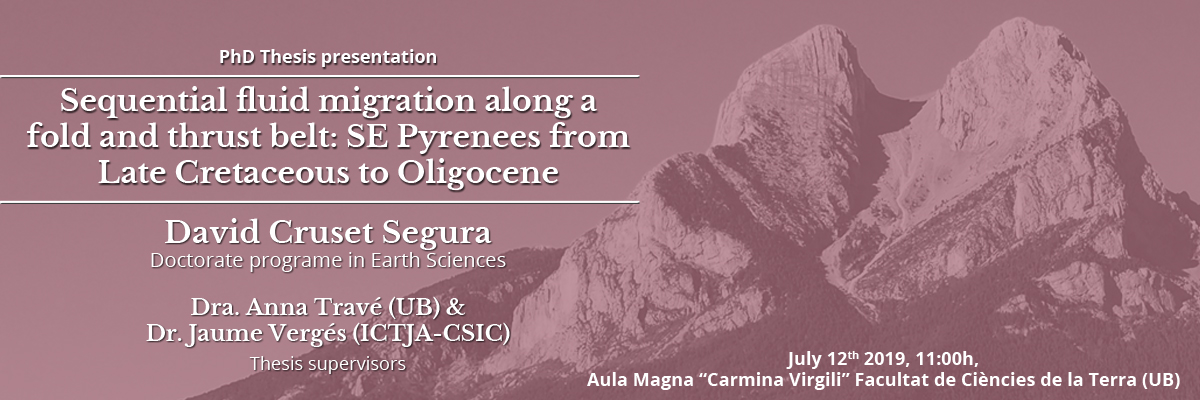
Details
- Thesis title: Sequential fluid migration along a fold and thrust belt: SE Pyrenees from Late Cretaceous to Oligocene
- Author: David Cruset Segura
- Date: Jylu, 12th, 2019 11:00H
- Place: Aula Magna Carmina Virgili de la Facultat de Ciències de la Terra
Thesis supervisors
- Dra.Anna Travé (UB)
- Dr. Jaume Vergés(ICTJA-CSIC)
Abstract
In this thesis we present a conceptual model of fluid flow in fold and thrust belts. To perform this model, a complete section of the south eastern Pyrenean fold and thrust belt has been studied and compared with other orogens worldwide using structural analyses, petrographic observations and geochemical methods applied to fracture-filling calcite cements. The integration of all the data indicates that during the layer-parallel shortening fluids tend to be in equilibrium with their adjacent host rocks. In contrast, during later folding and thrusting the paleohydrological system opens to the input of external fluids. Also, the progressive emersion of the thrust front is documented by geochemical trends observed from older to younger calcite cements. These trends include 1) a progressive decrease of the δ18O, Fe and Sr contents and Y/Ho ratios and 2) a progressive increase of the 87Sr/86Sr ratios, and Ce anomalies. The presence of thick evaporite units acting as a detachment of thrust sheets strongly controls the fluid composition and is evidenced by the progressive increase of the δ18O along time. U-Pb geochronology applied to calcite cements precipitated in fractures affecting the main south Pyrenean thrust sheets indicates that fluid migration was coeval with the emplacement of the main thrust units. Furthermore, the dates also indicate that older thrust sheets were passively deformed above lower and younger ones during their displacement towards the foreland and that this area of the Pyrenees was affected by deformation during the Neogene extension affecting the NE of Iberia. Finally, the tectonic style of deformation strongly controls the fluid system. In this way, whereas in thin-skinned thrust sheets the fluid system is dominated by meteoric, formation and marine fluids that migrate above detachment levels, thick-skinned deformation favors the input of deep-sourced fluids to the foreland and induce the development of thermal anomalies.
